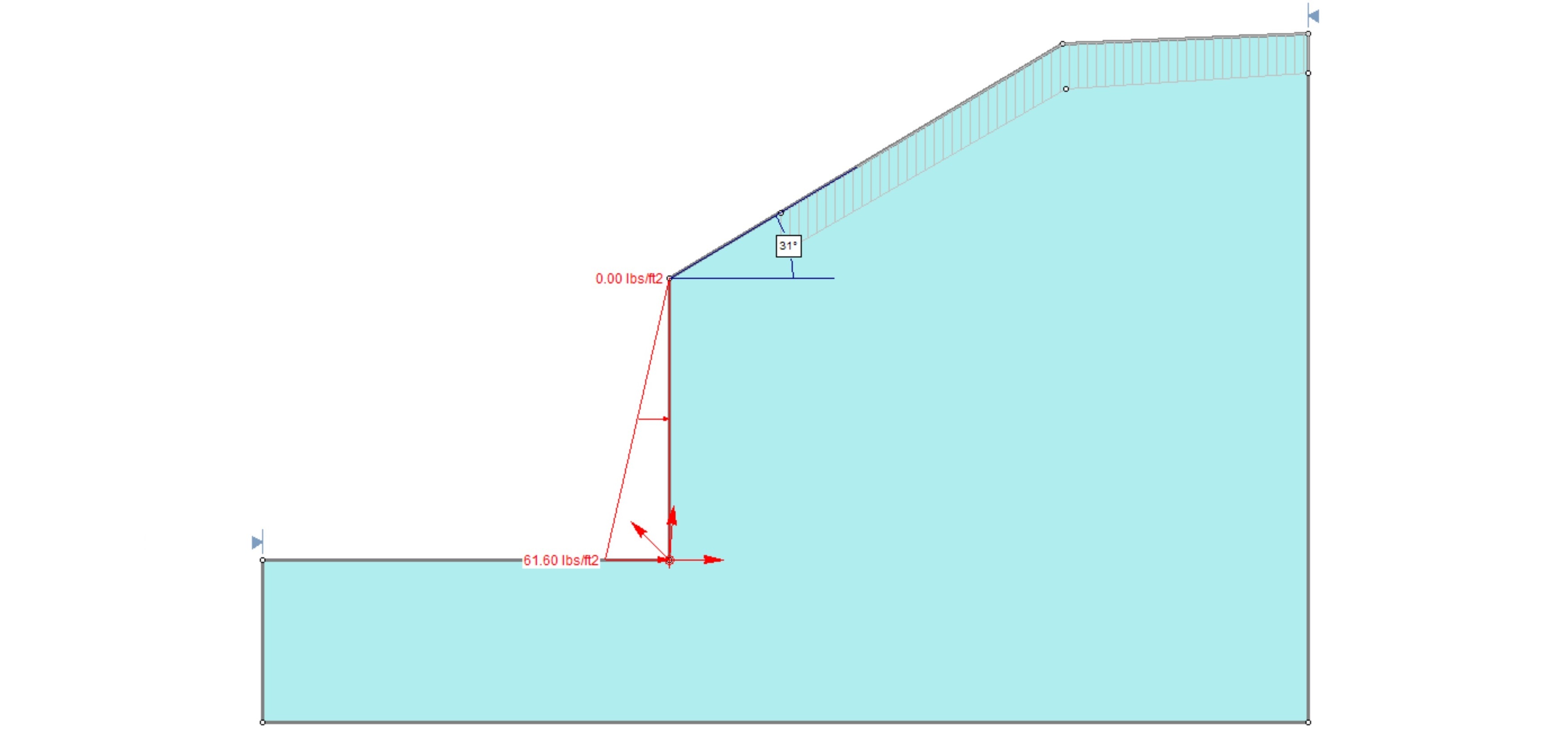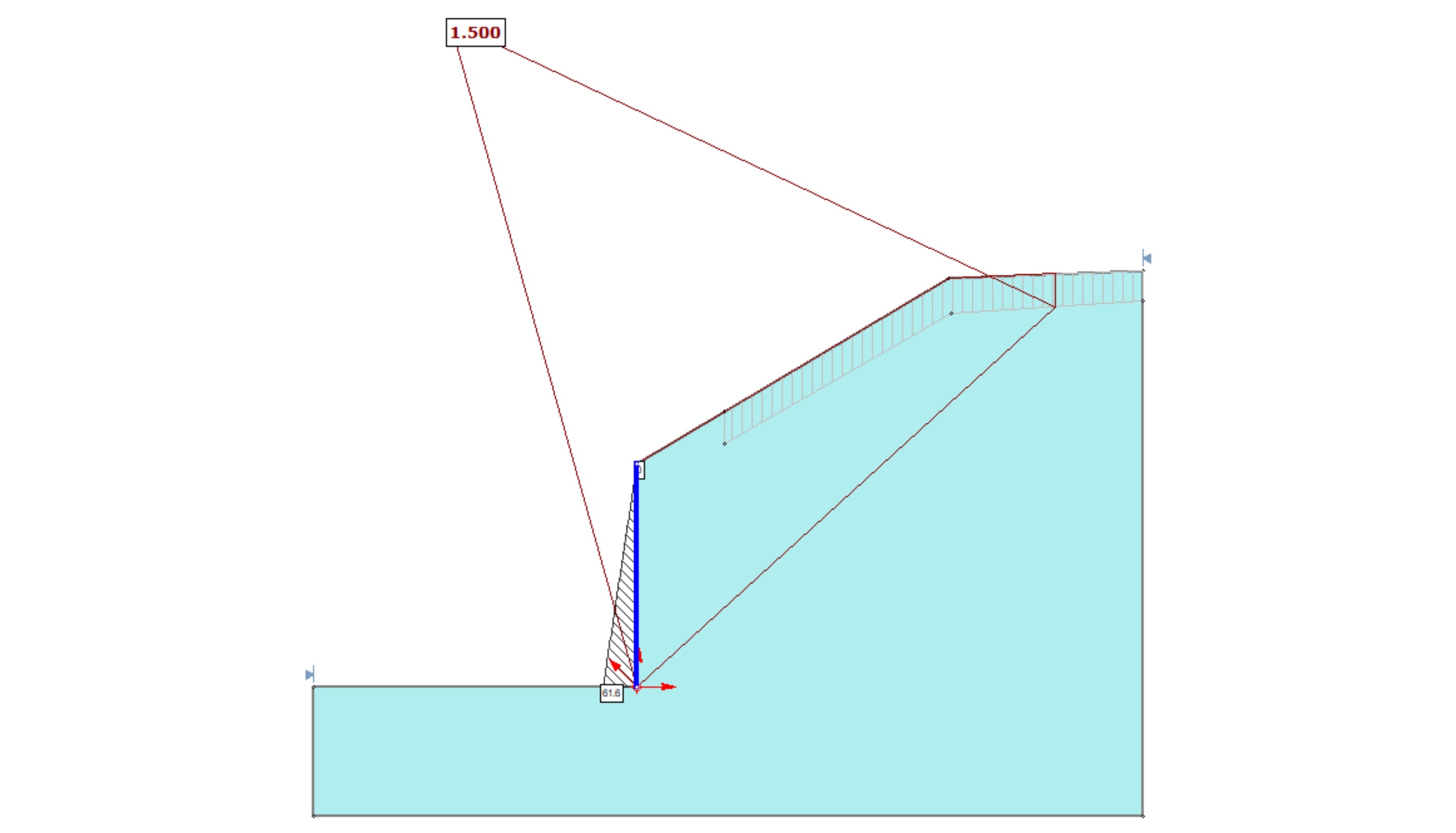The current design method involves the use of. Slope surcharge we recommend that unrestrained walls 8 feet in height or less be designed to resist an equivalent fluid pressure of 78 pounds per cubic foot pcf.

Equivalent Fluid Pressure Background Calculation And Design
Retaining wall design of equivalent height using only active pressure from Table of Equivalent Fluid Weights ForActive And At-Rest Pressure Based on Expansive SoilConditionsee above.

. Together we have created a. Water pressure can be greatly reduced by providing drainage aggregate and drain pipe directly behind the wall. The seismic lateral earth pressure for walls retaining level ground can be calculated using the Equation 4 based on Seed and Whitman 19703.
Active pressures measured at the the base of both walls were higher than would be obtained by presently used design criteria. The retaining wall is checked for stability. For example a heavily battered retaining wall design 10 utilizing high assumed soil strengths ϕ 36 may result in very low calculated earth.
The following guidelines shall be used when designing a situational Case 2 retaining wall with seismic pressure. As mentioned in my prior posting the only reason to use the term equivalent fluid pressure is that from measurements we have found that to a first order approximation the lateral earth pressures exerted on a retaining wall without a surcharge loading will increase linearly with depth in the same manner as would occur in a fluid and hence we can specify a. Both increase linearly with depth according to the equation.
For a cantilever retaining wall level drained condition subdrain the equivalent fluid pressure is simply the product of Ka Gamma where Ka is the Active earth pressure coefficient Gamma is the moist unit weight of the backfill. These may be excessive simplifications but they have proven sufficient for a great many walls over several decades. These soil properties are approximate.
We understand that the design of the retaining wall will be completed by the Client. That said I am in the middle of an update to the CRSI Design Handbook chapter 14 on cantilever retaining walls. Use the soil classification chart above to identify the basic properties of the soil at the site.
36 4000 lbft² 191520kPa. Experienced by the vertical wall on which the pressure is acting as shown in Figure 2 Page 4. From ASCE 7-10 Table 32-1 for some common soils and.
The density of water is much less than most soils 64 pcf however its lateral pressure coeffcient is 10 so the Equivalent Fluid or Lateral pressure is 645 psfft which is higher than most soils in an active pressure case. In this course we will use the word wall to mean the vertical plane on which the earth pressure is acting. Equivalent fluid pressure is a simplification of backfill earth pressure against retaining structures.
The current design method involves the use of an equivalent fluid pressure which results in a simple triangular pressure distribution. It can be combined with the unit weight of water to determine an equivalent fluid pressure EFP. There are 2 phases in the design of a retaining wall.
CRSI uses Rankine formulas to end up with a design based on essentially the equivalent fluid pressures. Lateral pressure at depth h g h. H the depth.
This water content will also determine the pressure against which a retaining wall must. Equivalent Fluid Pressure Retaining Wall Design Rtwall Design Of Concrete And Masonry Retaining Walls Cuss in more detail the design and construction of retaining walls 114. Many design codes define minimum equivalent fluid pressures as a means for establishing a simple retaining wall design criteria without site specific analysis.
Walls which retain drained earth and come within the limits of the exception above may be designed for an assumed earth pressure equivalent to that exerted by a fluid weighing not less than shown in Table No. 4-foot 12 m high gravity retaining wall equivalent fluid pressure of soil 30 pcf 47 kNm³ soil weight 100 pcf 157 kNm³ soil friction coefficient 055 soil bearing capacity 2000 lbft² 0096 MPa 100 solid concrete masonry units 120. Overturning sliding and bearing capacity failures.
Each component of the retaining wall. If the backfill behind a cantilever retaining wall or restrained basement wall is level we can use the equivalent pressure. If the backfill behind a cantilever retaining wall or restrained basement wall is level we can use the equivalent pressure.
G Equivalent Fluid Density 624 pcf for water. What the pore-size does do is potentially control other aspects of design- namely whether the design should consider drained or undrained conditions. The more restrictive design shall govern.
Moreover the equivalent fluid refers to a hypothetical fluid having a unit weight that produces pressure against a lateral support of which its value is presumably equal to that the actual soil produces. Lateral Earth Pressure for Use In Retaining Wall Design. 27 2500 lbft² 119700kPa.
Equivalent fluid pressure EFP is a simplification of the lateral loading that the soil exerts on an earth-retaining wall. We have assumed that the wall design will satisfy internal stability modes and is the responsibility of the wall designer. Additionally the feature now allows the user to select a triangular or trapezoidal pressure distribution to model cantilevered retaining walls and restrained basement retaining walls for any height.
Crib Wall Design Basic soil parameters. 32 3500 lbft² 167580kPa. The wall could be a basement wall retaining wall earth support system such as sheet piling or soldier pile and lagging etc.
The benefit of equivalent fluid pressure analysis is that it typically creates a easily understood design loading regardless of structure geometry and soil design properties. 𝛾 𝑃 𝑠𝑒𝑖𝑠𝑖𝑐 3 4 Gℎ 𝑠𝑜𝑖. For a cantilever retaining wall level drained condition subdrain the equivalent fluid pressure is simply the product of Ka Gamma where Ka is the.
ASCE 7-05 32 treats both lateral soil loads and hydrostatic pressure similarly. For simple retaining wall structures in terms of equivalent fluid pressure such as 40 pcf for ease of calculation. 11 New retaining wall design criteria were developed using long term field measurements of lateral earth pressures on two full scale retaining walls.
123003 7 2003KeystoneRetainingWallSystems EquivalentFluidPressure Itiscommonforstructuralandgeotechnicalengineerstodefinetheactiveearthpressureloading. DESIGN FLUID PRESSURES FOR RETAINING WALLS SUPPORTING RETAINED SOIL THAT IS OTHER THAN LEVEL. If simple cantilever walls are being considered the passive resisting pressure on the level ground at the base of slope can be taken to be 280 pcf equivalent fluid pressure from ground.
Together we have created a new support feature that allows the user to define a retaining wall using Equivalent Fluid Pressure EFP given in pounds per cubic foot pcf. Face of wall 5. Unit weight of soil Angle of friction Cohesion Then the lateral pressure distribution will be known.
𝐸 𝑖 J 4 𝛾 𝑃 𝑠𝑒𝑖𝑠 à𝑖𝑐 is the seismic increment expressed as equivalent fluid pressure pcf. Global stability of the wall system was.

Equivalent Fluid Pressure A New Retaining Wall Support For Slide2

Equivalent Fluid Pressure A New Retaining Wall Support For Slide2 Rocscience Geoengineer Org

Ascending Backfill Equivalent Fluid Pressure In Retaining Walls Soilstructure Software

Geotechnical Engineering Retaining Wall Saturated Soil Hydrostatic Pressure Engineering Stack Exchange

Equivalent Fluid Pressure A New Retaining Wall Support For Slide2

0 comments
Post a Comment